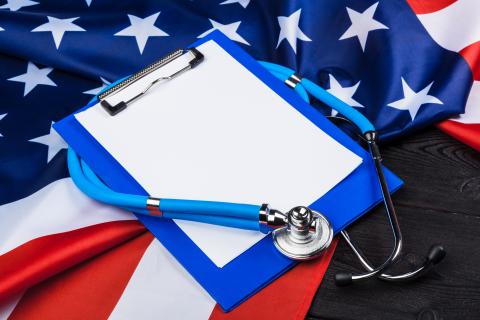
Brazil, the largest economy in Latin America (LATAM), is also the most promising medical device market in the region. The medical device market in Brazil is governed by the Agência Nacional de Vigilância Sanitária (ANVISA), or the Brazilian Health Regulatory Agency, which came up with a new resolution titled RDC 751, effective from March 01, 2023. This resolution defines risk classification rules for medical devices, labeling requirements and Instructions for Use (IFU), and procedures for notification, registration, amendment, revalidation, and cancellation of notification/registration of medical devices. It revokes RDC no. 185/2001, RDC no.15/2014, and RDC no. 40/2015.
With that said the need of the hour is to gain insights into the ever-evolving market updates. This blog discusses RDC 751/22, along with its purpose, scope, and updates, and it also contains an abstract of technical dossier requirements, timelines, validity, and renewals.
Understanding RDC 751/2022: A Modern Replacement for RDC 185/2001 in Medical Device Classification and Regulation
RDC 751/2022 has emerged as a game-changer in the field of medical device regulation, effectively replacing the previous resolution, RDC 185/2001. The new resolution brings forth updated classification criteria and revised Regulatory regimes, streamlining the Notificação (for Class I and II devices) and Registro (for Class III and IV devices) processes. It also establishes clear guidelines for risk classification, stipulating precise labeling requirements and providing explicit IFU of medical devices.
ANVISA has made notable strides in harmonizing medical device registration requirements with international standards. Notably, it has sought alignment with esteemed organizations like the International Medical Device Regulators Forum (IMDRF) and the European Union (EU). This kind of a proactive approach fosters consistency, and, in turn, facilitates the smooth entry of medical devices into the Brazilian market, while ensuring that they meet global quality and safety standards.
The Purpose of RDC 751/2022
The primary rationale behind the modification of the Brazilian regulation concerning medical devices was to update it, thereby enabling the incorporation of emerging technologies like Software as a Medical Device (SaMD) and nanomaterials, which were not accounted for in the earlier resolution, RDC 185/2001.
The Scope of RDC 751/2022
- Streamlined Technical Dossier Structure for Medical Device Registration: RDC 751/2022, which came into effect on March 01, 2023, is set to create significant ripples in the medical device registration process. It mandates that the technical dossier for registration must now adhere to a structured format, in accordance with the specified requirements. This move is aimed at enhancing the efficiency and clarity of the registration process, ensuring that the necessary documentation is comprehensive and accessible.
- Aligned with the European Medical Device Regulation (MDR) and IMDRF: The technical dossier framework introduced by RDC 751/2022 bears a striking resemblance to the structure employed in the European MDR technical documentation files, and moreover, conforms to IMDRF-compliant documentation practices.
- Streamlined Notification and Registration Processes: RDC 751/2022 provides a comprehensive framework that delineates procedures for notification, registration, amendments, revalidations, and cancellations of medical devices.
- Harmonization through the IMDRF’s “Table of Contents”: Embracing the structure of IMDRF’s “Table of Contents” for technical dossiers, RDC 751/2022 facilitates the utilization of dossiers intended for multiple jurisdictions, which in turn fosters Regulatory convergence and consistency.
- Grace Period for Transition: You need to consider specific timelines and requirements with regard to medical device modifications. For devices transitioning from notification to registration, you have 365 days (until February 29, 2024) to complete the process. Conversely, for devices transitioning from registration to notification, you must submit a correction application within the same timeframe. For devices maintaining their risk class or shifting to another within the same registration route, you must follow the new “Table of Contents” structure for the next modification submission. In cases where devices remain subject to registration but under a different risk class, you may have to go through a Brazilian Good Manufacturing Practice (BGMP) update. It is crucial that you adhere to these guidelines to ensure compliance and avoid any Regulatory issues.
- Validity and Renewal of Market Authorizations: While under RDC 751/2022, market authorizations for Risk Class I and II medical devices remain valid indefinitely, they are subject to potential cancellation under specific circumstances. On the other hand, pre-market approvals for Risk Class III and IV devices are initially valid for ten (10) years, with the option of renewing them for subsequent equal periods.
It is important for you to familiarize yourself with the specific requirements outlined in RDC 751/2022 and consult Regulatory experts to ensure compliance with the new resolution.
To explore the extensive Regulatory landscape of the Brazilian medical device industry, on August 16, 2023, Freyr brings to you an exclusive webinar titled “Understanding RDC 751: A Comprehensive Analysis of its Impact on Medical Device Regulations”. In this webinar, our in-house Regulatory expert, Manali Shah, LATAM Market Delivery Head, will explain the current scenarios, compliance deadlines, in-depth insights on new risk classification rules, consolidation of rules for notification, registration, new definitions and concepts, rules for the documentary repository of medical devices, IMDRF’s “Table of Contents” for technical dossiers, updated terminology, the conjugated series of regulations for medical devices in a single RDC, impact assessment of your device registrations, and Regulatory services in Brazil. Register right away for clear-cut insights. Stay informed! Stay compliant!









